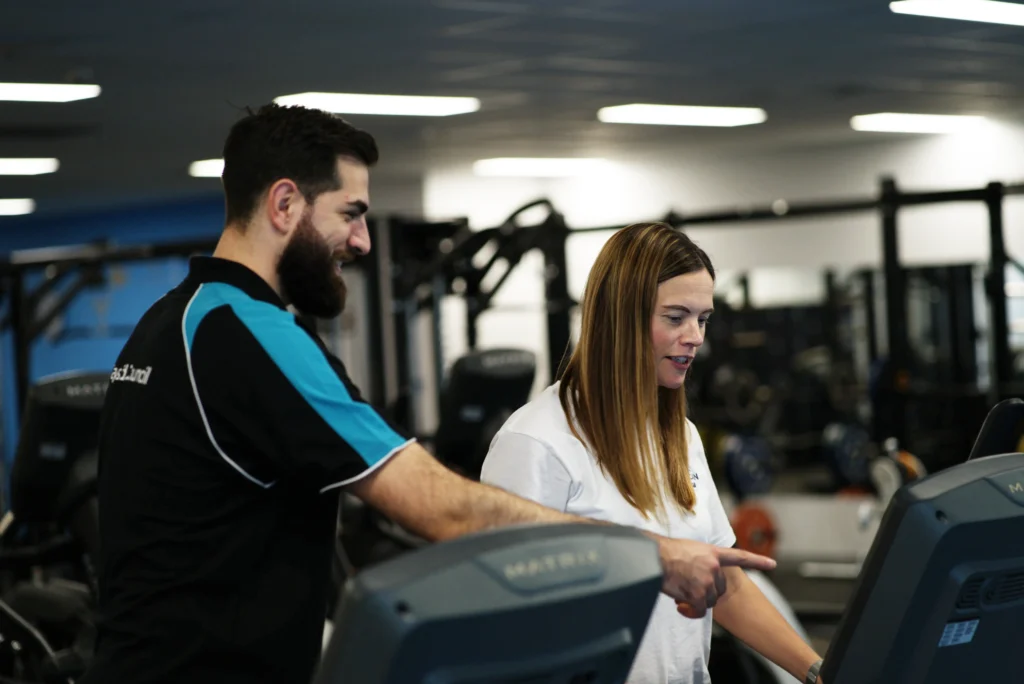Running is a popular form of exercise that can be done inside or outside. It’s a simple form of cardio workout that gets your heart rate up and boosts your overall health. While running on a treadmill may seem boring to some, running outside can add some excitement to your workout routine.
In the end, there’s no definite answer to the treadmill vs. outside running debate. Both methods have their advantages and disadvantages depending on your personal training preferences and goals. Both can be utilized in your running routine effectively.
Running on a treadmill
One can achieve the same workout goals whether they run on a treadmill or outside, as long as they put in the same level of effort. However, it’s important to note that “effort” can be subjective. Clinically, Effort is not solely determined by heart rate, but also by a concept called perceived exertion. Perceived exertion refers to how difficult you perceive an activity to be, regardless of how your body physically responds to it.
For example, running indoors may feel less challenging compared to running outdoors on a rainy day, even if you burn more calories or have a higher heart rate indoors. On a hot and sunny day, running outside may be perceived as harder than running on a treadmill at the same incline and distance. Even if you maintain the same pace on a treadmill, you typically expend more energy when running outside. This difference in calorie burn is not only influenced by factors like terrain, weather, and wind conditions but also because the treadmill assists you by propelling you forward.


Pros of running on a treadmill
- Weather-Proof: Treadmills allow running regardless of weather conditions, avoiding discomfort and risks associated with outdoor running.
- Pace Control: Provides the ability to maintain a consistent pace, track mileage easily, and regulate intensity.
- Multi-Tasking: Enables entertainment or reading while running, enhancing the overall experience.
- Joint-Friendly: Offers better shock absorption, reducing stress on joints compared to outdoor running.
- Safety: Provides a safer running environment, especially when running alone or at odd hours.
Cons running on a treadmill
- Risk of Injury: Despite being safer than outdoor running, treadmills still pose injury risks, including falls and cardiovascular events.
- Lack of Downhill Feature: Most treadmills lack a downhill incline, limiting training for downhill parts of races.
- No Turns: The inability to make turns limits the improvement of lateral agility.
- Boredom: Long treadmill sessions can be boring, despite attempts to replace boredom with entertainment.
Running outside
Running outdoors offers a more authentic environment for enhancing various aspects of your fitness, such as speed, strength, coordination, technique, and endurance. For example, tackling hills or mountains in your area can push your legs to the limit, providing a different challenge compared to running on a treadmill with limited incline settings. Spending time in nature can be incredibly soothing, and studies have revealed that going for a run outside can reduce the release of cortisol, the stress hormone. Interestingly, research has even shown that being in nature can enhance both your memory and attention span.
Pros of running outside
- Travel-friendly: Running outdoors allows exploration of new places and continuation of training while traveling.
- Sport-specific training: Helps prepare muscles and joints for varied terrain and weather.
- Enjoyment of nature: Outdoor running offers the opportunity to breathe fresh air and enjoy scenic surroundings.
- Increased calories burned: Wind resistance outdoors leads to a higher calorie burn during runs.
Cons of running outside
- Risk of injury: Uneven terrain increases the risk of knee, leg, foot, and ankle injuries.
- Weather dependence: Inclement weather and extreme temperatures can disrupt outdoor running routines.
- Safety concerns: Hazards such as falls, traffic, and encounters with animals or other people pose potential dangers during outdoor runs.

If you’re focused on reaching and maintaining your cardiovascular fitness goals, a running on treadmill could be the perfect solution. By using a heart rate monitor, you can ensure you’re working out at the right intensity without exceeding your maximum heart rate. However, running outside may be more beneficial if you’re training for a race. While treadmill workouts can still be helpful, it’s recommended to limit them to no more than 40% of your total training.
Ultimately, whether you prefer running indoors or outdoors is a personal choice. Consistency is key, so go with what you enjoy most. You don’t have to choose between treadmill running and outdoor running – a mix of both could be the ideal solution for you.
Looking for a perfect place to do effective cardio workouts? Join our fitness program today and let us assist you in reaching your health & fitness goals effectively. Become a member today!



